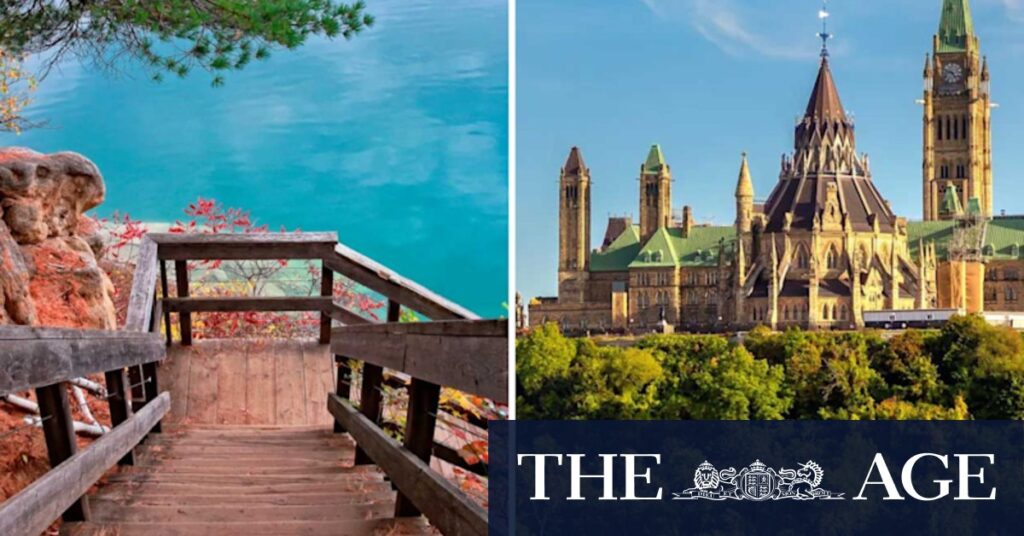
In a world where cities often compete for attention, some unique destinations offer the best of both worlds—literally. These twin cities, each with its own distinct history, character, and attractions, provide travelers with the opportunity to experience two different urban landscapes in one trip. Whether separated by historical events or geographical boundaries, these cities promise a rich tapestry of experiences for the curious traveler.
Cieszyn and Cesky Tesin: A Historical Divide
Separated by the Polish-Czech border, Cieszyn and Cesky Tesin are prime examples of how history can shape the identity of a city. Once a single entity, these towns were divided in the aftermath of World War I. Today, they stand as a testament to the resilience and adaptability of their inhabitants. Visitors can explore the unique blend of Polish and Czech cultures, from the architecture to the culinary delights.
Buda and Pest: The Heart of Hungary
Budapest, Hungary’s capital, is famously divided by the Danube River into Buda and Pest. Officially united in 1873, these two halves offer contrasting experiences. Buda, with its hilly terrain and imperial past, provides stunning views from Castle Hill, while Pest buzzes with contemporary life, offering lively cafes, ruin pubs, and art nouveau architecture.
Expert Opinion: “Budapest is a city where history and modernity coexist harmoniously,” says Dr. Anna Kovacs, a historian specializing in Central European studies. “The division of Buda and Pest allows visitors to experience the duality of Hungary’s cultural evolution.”
Shanghai and Pudong: A Tale of Two Skylines
Shanghai, one of China’s most dynamic cities, contrasts sharply with its neighbor, Pudong. While Shanghai boasts a rich art deco heritage and cultural landmarks like the Bund, Pudong is a symbol of China’s rapid modernization, with its futuristic skyscrapers and bustling financial district. The juxtaposition of these two areas highlights China’s journey from historical depth to contemporary innovation.
“Shanghai’s history is irrelevant on a Chinese timescale. Pudong showcases China’s forward-looking momentum.” – Travel Expert
Istanbul and Galata: Bridging East and West
Istanbul, historically known as Constantinople, is a city that straddles two continents. Across the Golden Horn lies Galata, once a Genoese trading colony and now a vibrant cultural hub. While Istanbul offers grand Byzantine and Islamic monuments, Galata provides a modern, multicultural experience with its trendy boutiques and lively nightlife.
Historical Context: “Istanbul’s unique position as a bridge between Europe and Asia has made it a melting pot of cultures and traditions,” explains Professor Mehmet Yildiz, an expert in Ottoman history. “Galata’s evolution from a trading post to a cultural hotspot reflects the city’s ongoing transformation.”
Ottawa and Gatineau: A Bilingual Experience
Separated by the Ottawa River, Ottawa and Gatineau offer a microcosm of Canada’s bilingual and multicultural identity. While Ottawa is known for its national museums and governmental buildings, Gatineau provides a more relaxed atmosphere with its parks and outdoor activities. Together, they encapsulate the diverse aspirations of Canadians.
“The two are like a mini-Canada that condenses the aspirations of Canadians into one pleasing, bilingual, cosmopolitan and quirky package.” – Local Journalist
Copenhagen and Malmo: A Bridge Across Cultures
Connected by the Oresund Bridge, Copenhagen and Malmo offer a seamless blend of Danish and Swedish cultures. Copenhagen, with its royal history and vibrant neighborhoods, contrasts with Malmo’s modern, artistic vibe. This cross-border connection exemplifies the progressive spirit of Scandinavia, where historical richness meets contemporary innovation.
Conclusion: Embracing Duality in Travel
These twin cities offer more than just a travel destination; they provide a journey through time, culture, and innovation. Whether exploring the historical divides of Cieszyn and Cesky Tesin or the modern marvels of Shanghai and Pudong, travelers can immerse themselves in the rich tapestry of human experience. As the world becomes more interconnected, these cities remind us of the beauty and complexity of our shared heritage.






